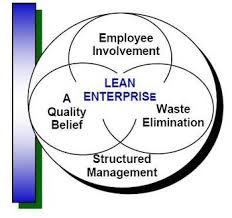An overview
– Part 3 –
 We mentioned that the lean management philosophy calls for value creation through elimination of waste. These wastes are common in all industries and are not unique to healthcare. The following is a summary of these wasteful activities:
We mentioned that the lean management philosophy calls for value creation through elimination of waste. These wastes are common in all industries and are not unique to healthcare. The following is a summary of these wasteful activities:
- Overproduction—producing something in excess, earlier, or faster than the next process needs it
- Inventory—the cost of managing a large supply inventory may not be obvious at first glance; beside consumption follow-up and space required to store, there is a need to follow expiration dates and to constantly ensure that the items in the inventory are not technologically obsolete. It was already shown that the overall cost of smaller and more frequent shipments is lower than a large-volume purchase for which a discount was provided
- Motion—a lot of walking waste can arise from poor design of the working area
- Transportation—in healthcare this can be evident when moving patients, lab tests, information, etc.
- Over-processing—there are times when material provided to the customers (patients) mandated by regulations can be confusing. For example, multiple insurance claim forms, including ones that are not bills, can confuse the inexperienced “novice”
- Defects—there are many examples for these defects that can be related to poor labeling of tests, incomplete information in patients’ charts or in instructions provided to referrals, etc.
- Waiting—there is not much need to explain why waiting a few hours in line is a wasteful activity
- Under-utilizing staff—under-use is not only time-dependent but also involves deeper levels such as not sharing knowledge or not taking advantage of someone’s skills and creativity; under-use typically shows in hierarchical structures and not using teams
It was suggested that in order to implement lean management in healthcare, the patient has to be the center of the initiative, while time and comfort should be added as key performance measures in the system. Defining the patient as the primary customer requires a conceptual leap because usually the customer pays directly to the enterprise, whereas in healthcare third-party payments depending on the level of insurance are common. However, if it is understood that value is related to customer requirements and it will be the customer that ultimately determines what constitutes waste, it becomes evident that patients’ demands may require changes even in processes that may not be directly related to patient care.
Early approaches for implementation of lean management principles in healthcare were but an exercise to transfer manufacturing principles in order to reduce physical inventories in hospitals, but later the following types of implementation were reported:
- Manufacturing-like studies
- Managerial and support case studies
- Patient-flow case studies
- Organizational case studies
Most of these applications (57%) occurred in the USA. The levels of implementation can be defined at three levels:
- Micro—operational level outcomes represented by manufacturing-like, managerial and support, and patient-flow cases
- Meso—strategic level that focuses on financial health of organizations, with potential outcomes being financial, staff morale, and involvement
- Macro—outcomes of national initiatives such as the National Health Service plan in the UK
It was noticed that as implementation of lean management principles in healthcare becomes more popular in the USA and Europe, a shift from manufacturing-like to organizational cases is observed in the literature. However, the same study reports that no publications were found on lean deployment in Japanese healthcare organizations; the authors speculate that this may be a result of either the lack of Japanese case publishing tradition, or the fact that lean is naturally embedded in the Japanese culture and only outstanding cases were reported.
Several examples of successful implementation of comprehensive lean management projects in healthcare institutions were reported. For example, at Virginia Mason Medical Center (VMMC), where “patient is God,” the hospital reported increased profit margins, decrease in deaths, and decrease in the number of medication errors. Other reported benefits are an 85% reduction in how long patients wait for a lab result, increased productivity by 93%, and lowering inventory costs by $1 million. In order to reach these results, in 2002, 30 senior managers traveled for two weeks to observe the Toyota Production System at TMC. As the CEO mentioned, among the lessons learned was that “the institution didn’t fall apart without us.” Since then and until 2008, more than 200 employees have toured production plants in Japan.
Challenges towards lean implementation in healthcare are related to the concepts of value, metrics, and evidence. Evidence shows that healthcare in the USA lacks efficiency, is not patient-centered, does not provide timely services, and is not equitable (the last two being related to many patients being under-insured). Redesigning such a system around values such as patients being “primary customers,” emphasizing clinical and services outcomes, using evidence-based tools, and adopting rigorous quality improvement methods may be a phenomenal challenge if it is imposed at the macro or even the meso strategic levels.
End of Part 3
This concludes Part 3 of the 4-part series, Lean Management for Healthcare Organizations. If you’d like to learn more about lean management and how it can benefit your organization, contact the experts at BHM Healthcare Solutions today.
Email: re*****@*******pc.com
Phone: 1-888-831-1171
or click on the “request information” icon below






